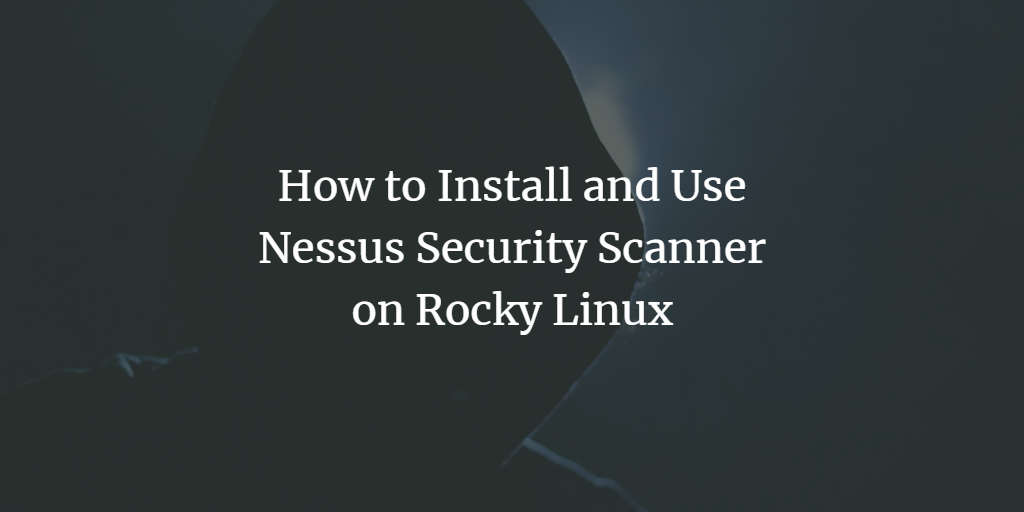Nessus is a renowned open-source network vulnerability scanner, extensively utilized for vulnerability assessments, penetration testing, and ethical hacking. It integrates the Common Vulnerabilities and Exposures (CVE) architecture to deliver one of the market’s most comprehensive scanning solutions. Nessus facilitates the identification of network vulnerabilities, misconfigurations, Denial of Service (DoS) vulnerabilities, and more.
Providing high-speed asset discovery, target profiling, configuration auditing, malware detection, and sensitive data discovery, Nessus is available in multiple versions: Nessus Essentials, a free tool, and Nessus Professional for advanced penetration testers and ethical hackers.
This guide details the installation of the Nessus Security Scanner on a Rocky Linux server and demonstrates setting up the Nessus CLI for terminal command management, ultimately showing you how to scan a server using Nessus.
Prerequisites
Before proceeding with this guide, ensure you have the following:
- A Rocky Linux server (this example uses Rocky Linux 8 with the hostname ‘nessus-server‘).
- A non-root user with sudo/root administration privileges.
- SELinux set to ‘permissive‘ mode.
Installing Nessus via RPM File
Nessus is designed for enterprise-class security and can be installed on various operating systems, including Linux distributions, BSD, Windows, and macOS. The complete list of Nessus packages is available on the Nessus download page, offering various packages for Linux distributions, including the .deb file for Debian-based and the .rpm file for RHEL-based distributions.
For Rocky Linux, download the Nessus .rpm file and install it using the ‘rpm’ command.
Begin by installing curl with the following dnf command:
sudo dnf install curl
Next, download the Nessus RPM file using this curl command. The latest version at the time of writing is Nessus v10.4:
curl --request GET \ --url 'https://www.tenable.com/downloads/api/v2/pages/nessus/files/Nessus-10.4.1-es8.x86_64.rpm' \ --output 'Nessus-10.4.1-es8.x86_64.rpm'
Upon completion, the file ‘Nessus-10.4.1-es8.x86_64.rpm‘ will appear in your current directory.

Install the package with this command:
sudo rpm -Uvh Nessus-10.4.1-es8.x86_64.rpm
After installation, you should see an output similar to this:
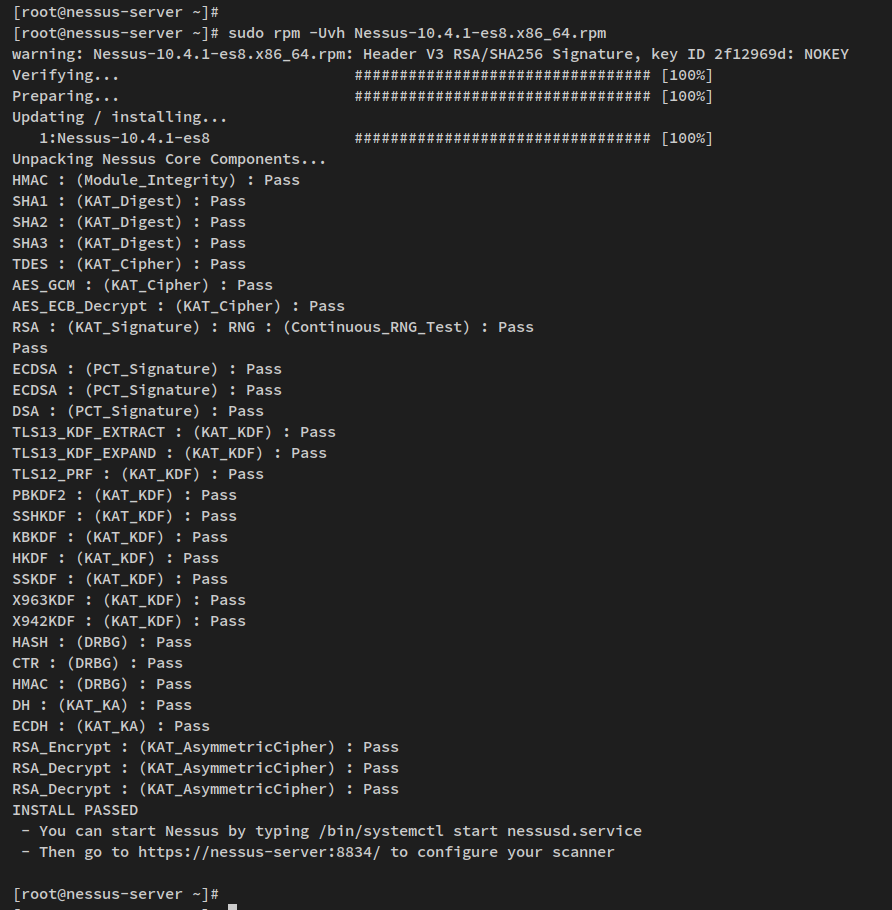
Start and enable the Nessus service:
sudo systemctl start nessusd sudo systemctl enable nessusd
Verify the service status:
sudo systemctl is-enabled nessusd sudo systemctl status nessusd
The Nessus service should be enabled and automatically start on boot, with a running status.
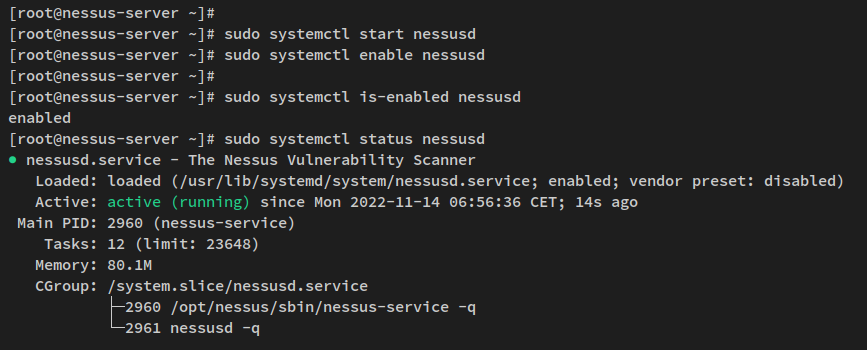
Configuring Firewalld
Post-installation, configure Firewalld to open port 8834 for the Nessus administration dashboard:
Add port 8834/tcp:
sudo firewall-cmd --add-port=8834/tcp --permanent
Reload Firewalld to apply changes:
sudo firewall-cmd --reload
Verify open ports:
sudo firewall-cmd --list-all
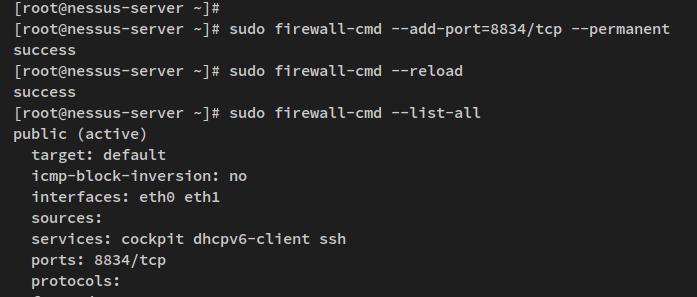
You can now access Nessus from your web browser.
Nessus Basic Configuration
Proceed to set up and start Nessus installation by installing Nessus Essentials. Ensure you have an email address ready to receive the activation code.
Access the server IP via a browser at https://[server_IP]:8834/. Select ‘Nessus Essentials‘ and click ‘Continue‘.
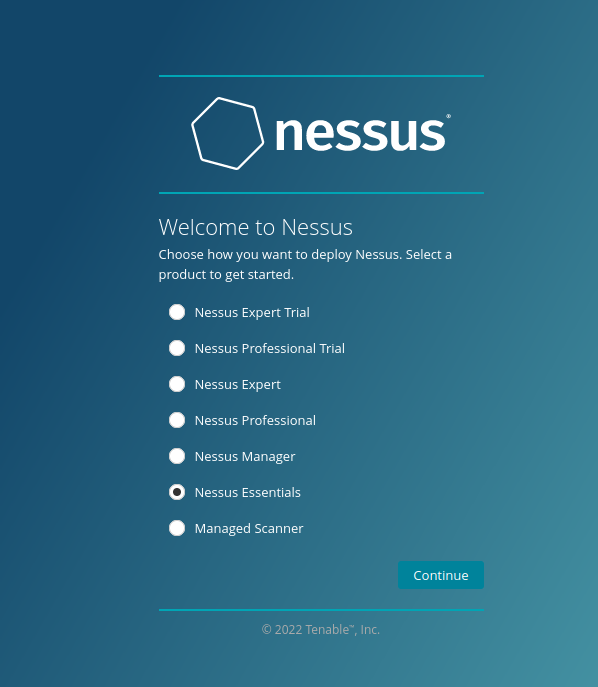
Enter your name and email to receive the activation code and click ‘Email‘.
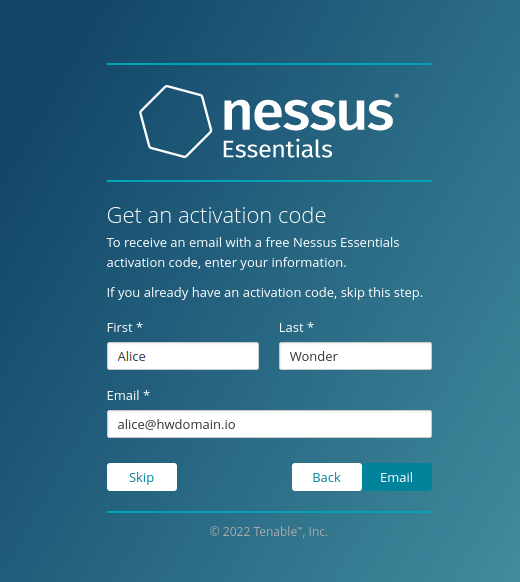
Input the activation code and continue.
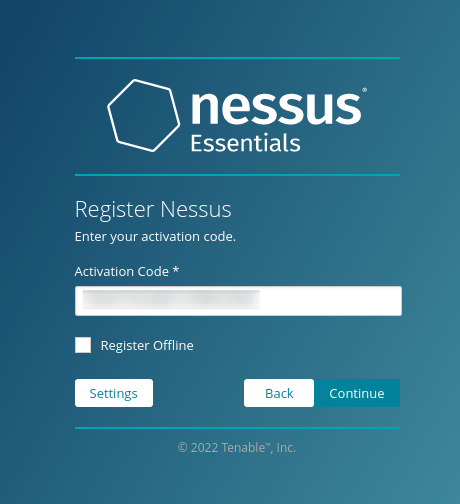
After verification, create an admin user, then submit.
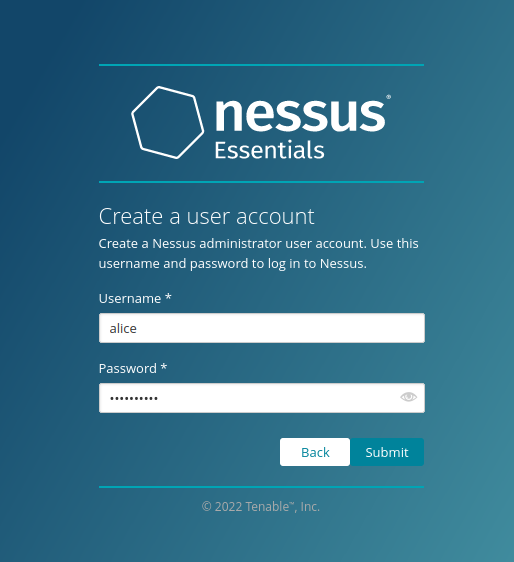
Installation will commence, including plugin compilation. This takes time to complete.
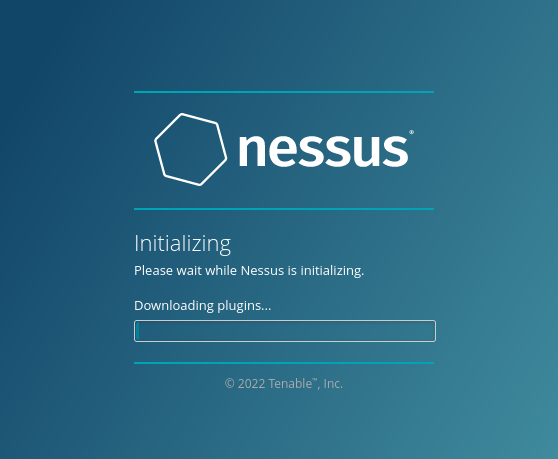
Upon completion, access the Nessus dashboard as the admin user.
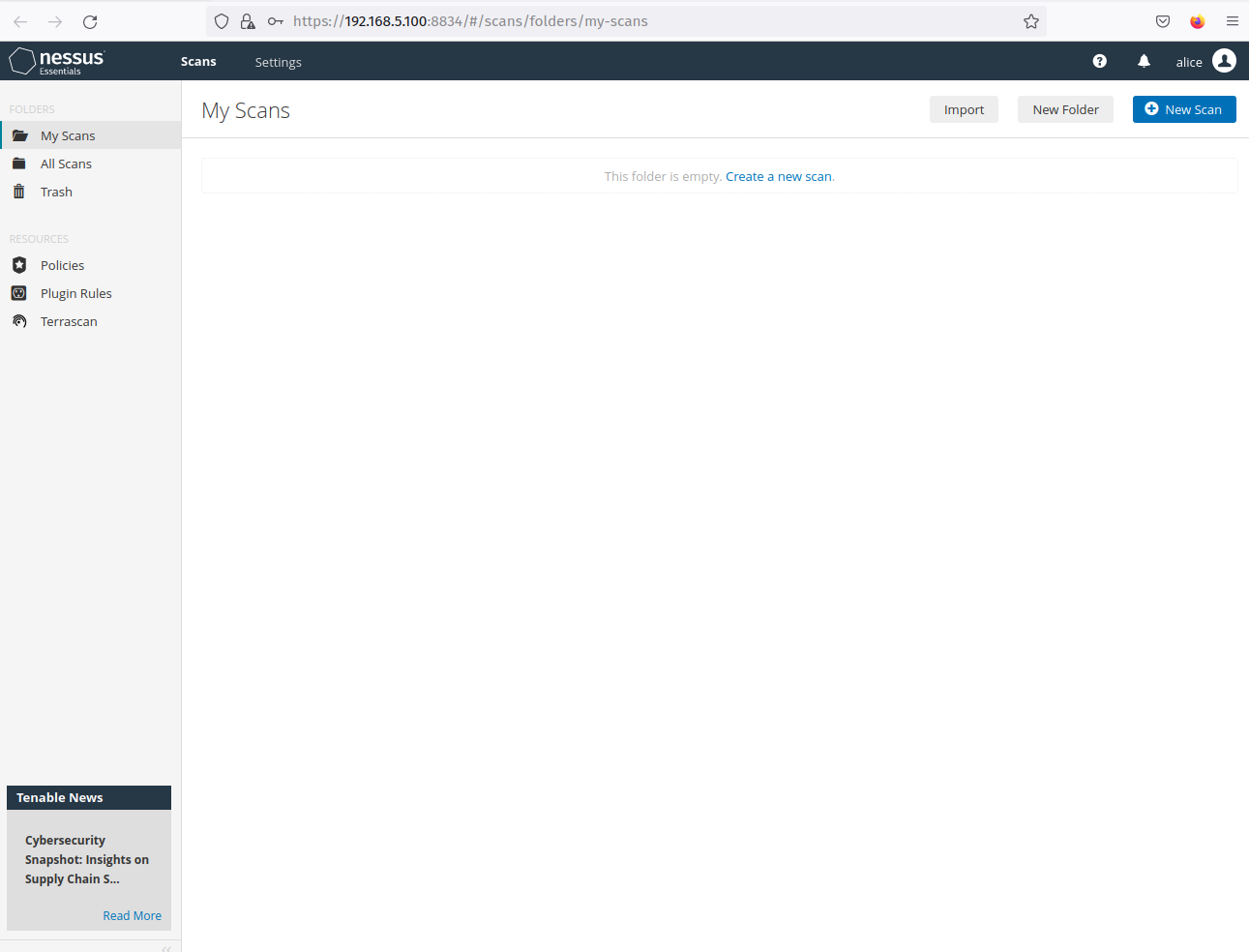
Setting up Nessus CLI
Nessus is installed in ‘/opt/nessus’. To enable CLI usage, append ‘/opt/nessus/bin’ and ‘/opt/nessus/sbin’ to the system’s $PATH environment variables.
First, list directories inside the installation directory:
ls /opt/nessus
Add Nessus paths to your $PATH:
echo 'export PATH="$PATH:/opt/nessus/bin:/opt/nessus/sbin"' >> ~/.bashrc
Reload the configuration:
source ~/.bashrc echo $PATH
Nessus CLI should now be accessible:
which nessuscli nessuscli help

Creating Your First Scan with Nessus
On the dashboard, select ‘Create a new scan‘.

Choose ‘Basic network scan‘.
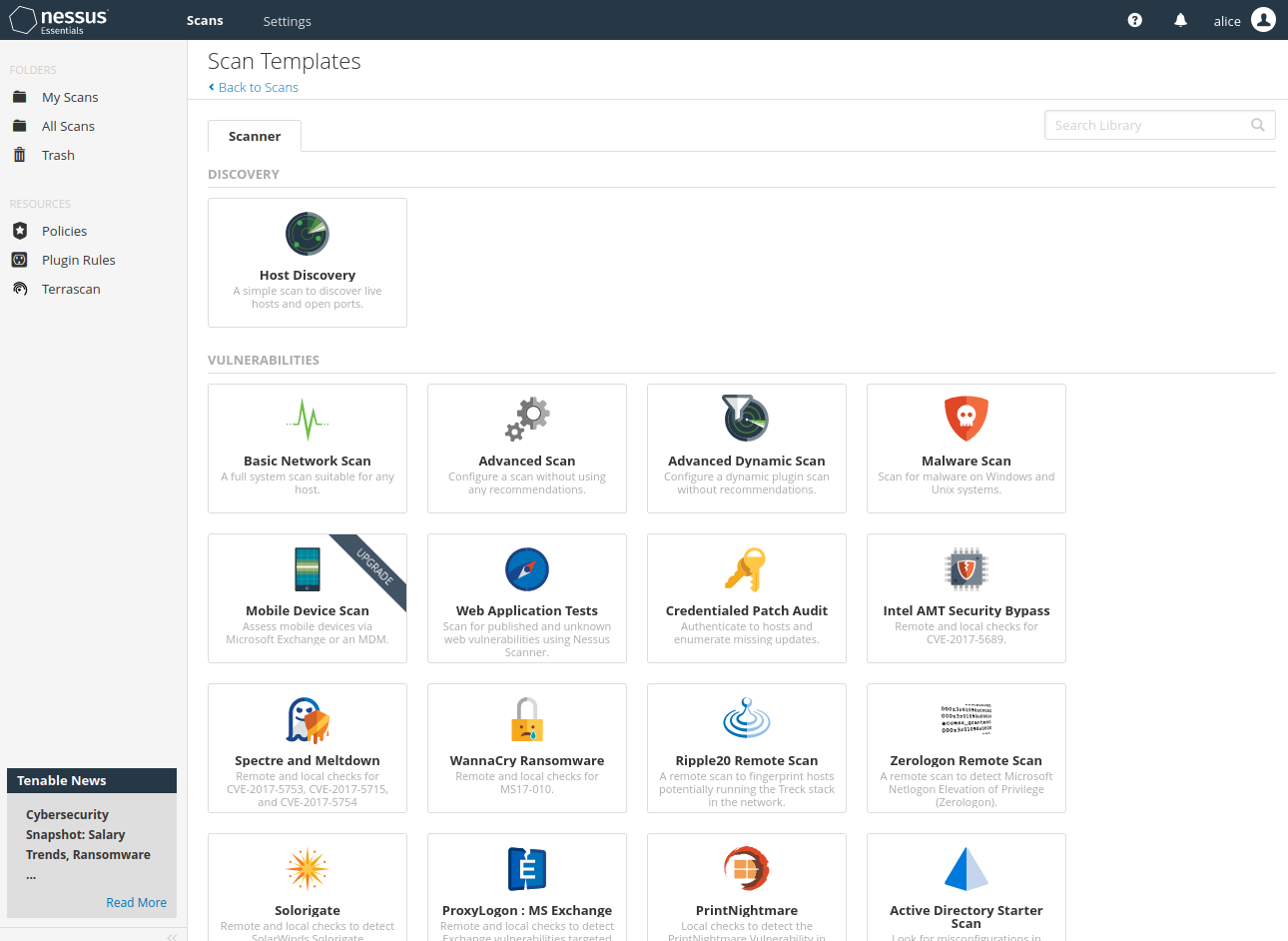
Enter scan details (name, description, folder, target host) and click ‘Save‘. This example uses ‘scan-rocky-linux‘ targeting ‘192.168.5.100‘.

Under ‘My Scan’, locate your scan. Click the play button to start.

Your ‘scan-rocky-linux‘ is now running.

Click ‘scan-rocky-linux‘ for scan results, and check ‘Vulnerabilities‘ for detailed information.
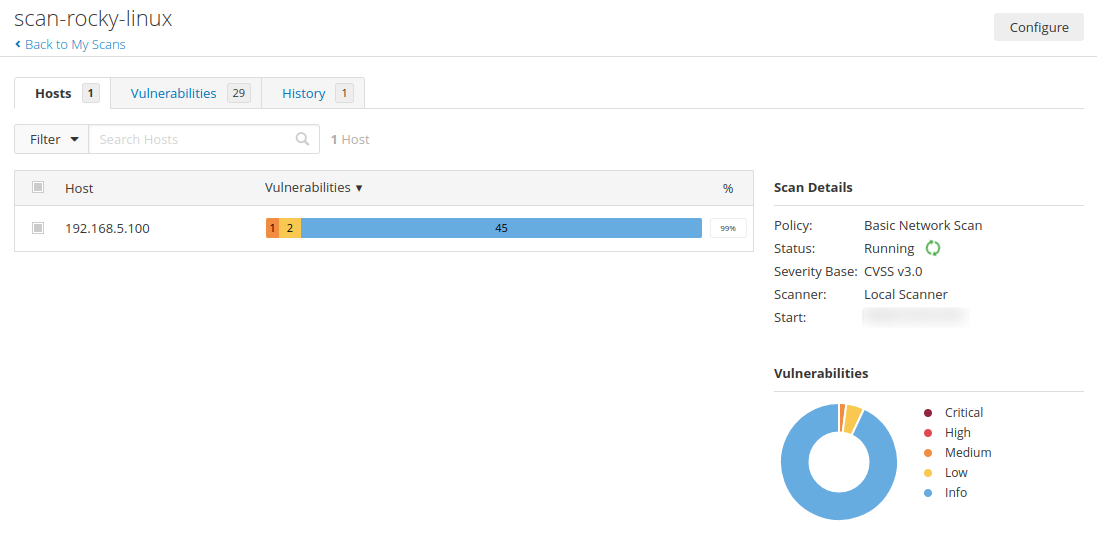
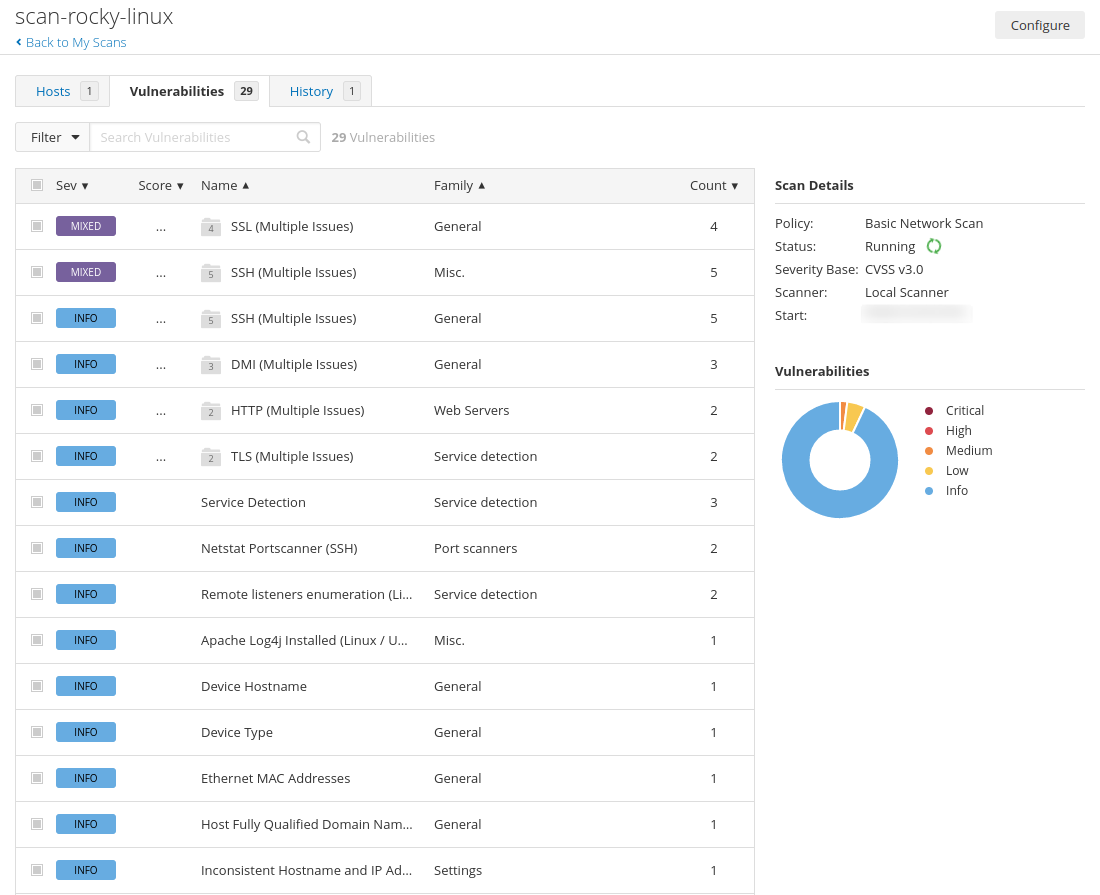
Conclusion
Congratulations! You have successfully installed the Nessus Security Scanner on a Rocky Linux server. This guide helped you set up Nessus and configure the CLI, enabling you to run and manage scans directly from the terminal. Additionally, you’ve learned to create scans and identify security vulnerabilities using Nessus.
Frequently Asked Questions (FAQ)
1. What is Nessus used for?
Nessus is used for vulnerability scanning, vulnerability assessments, penetration testing, and ethical hacking to identify security weaknesses in networks and systems.
2. Is Nessus free to use?
Nessus Essentials is free for limited use, while Nessus Professional requires a subscription for advanced features suitable for professional penetration testers and ethical hackers.
3. Can Nessus run on other operating systems?
Yes, Nessus is compatible with multiple operating systems, including Linux, BSD, Windows, and macOS.
4. How do I access the Nessus interface?
You can access Nessus through a web browser using the server’s IP address followed by port 8834 (e.g., https://192.168.5.100:8834/).
5. What are Nessus plugins?
Nessus plugins are scripts used to detect vulnerabilities based on version, configuration, and patch information.
